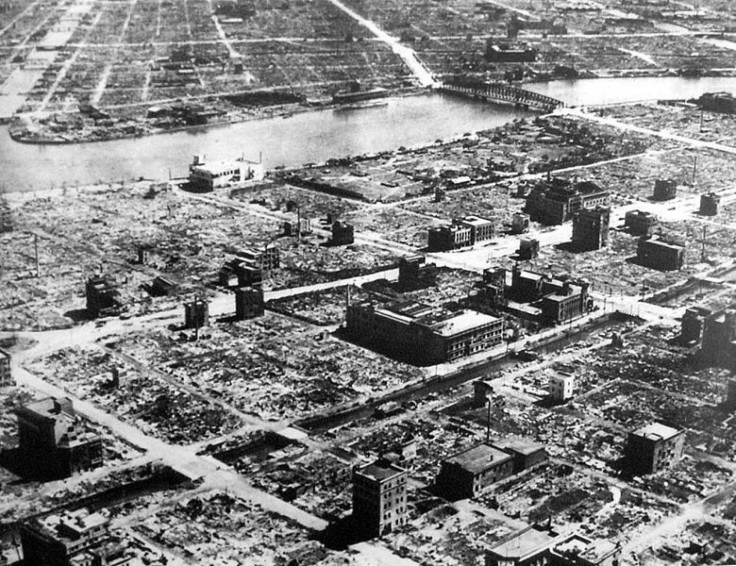Japan death toll: Over 100,000 died in Tokyo bombing

Exactly 66 years ago, the U.S. Airforce conducted the largest single firebombing in history over Tokyo which killed at least 100,000 residents and injured up to one million people. Burning large parts of the city with incendiary bombs was thus more effective in killing civilians than either the Hiroshima or Nagasaki atomic bombs.
335 B-29 bombers reached the airspace over Tokyo on March 10, 1945, and dropped around 1,700 tons of bombs on the residential areas of the city, whipping up a firestorm which consumed an area of 41 square kilometres (16 sqare miles). Estimates of the death toll vary. The lowest numbers are found in the US Strategic Bombing Survey, listing 88,000 people dead in this one raid, 41,000 injured, and over a million residents who lost their homes. The Tokyo Fire Department estimated a higher toll: 97,000 killed and 125,000 wounded.
The historian Richard Rhodes estimates a much higher number of injuried people, with that number at a million, and puts deaths at over 100,000.
But even these casualty and damage figures could be low; Mark Selden wrote in Japan Focus:
The figure of roughly 100,000 deaths, provided by Japanese and American authorities, both of whom may have had reasons of their own for minimizing the death toll, seems to me arguably low in light of population density, wind conditions, and survivors' accounts. With an average of 103,000 inhabitants per square mile (396 people per hectare) and peak levels as high as 135,000 per square mile (521 people per hectare), the highest density of any industrial city in the world, and with firefighting measures ludicrously inadequate to the task, 15.8 square miles (41 km2) of Tokyo were destroyed on a night when fierce winds whipped the flames and walls of fire blocked tens of thousands fleeing for their lives. An estimated 1.5 million people lived in the burned out areas.
Mark Selden. A Forgotten Holocaust: US Bombing Strategy, the Destruction of Japanese Cities and the American Way of War from the Pacific War to Iraq. Japan Focus, May 2 2007.
The author provides a good description of how the inferno was created by a crafty combination of firebombs, explosives and napalm:
Their mission was to reduce the city to rubble, kill its citizens, and instill terror in the survivors, with jellied gasoline and napalm that would create a sea of flames. Stripped of their guns to make more room for bombs, and flying at altitudes averaging 7,000 feet to evade detection, the bombers, which had been designed for high-altitude precision attacks, carried two kinds of incendiaries: M47s, 100-pound oil gel bombs, 182 per aircraft, each capable of starting a major fire, followed by M69s, 6-pound gelled-gasoline bombs, 1,520 per aircraft in addition to a few high explosives to deter firefighters. The attack on an area that the US Strategic Bombing Survey estimated to be 84.7 percent residential succeeded beyond the wildest dreams of air force planners. Whipped by fierce winds, flames detonated by the bombs leaped across a fifteen square mile area of Tokyo generating immense firestorms that engulfed and killed scores of thousands of residents.
On March 11th, less than 29 hours after the Tokyo bombing, 313 B-29's took off for Nagoya, which was Japan's third largest city. The bombing was not as efficient, though, and only 2.05 square miles of the city were destroyed. 18 industrial targets were destroyed, but the aircraft plants weren't. What helped keep the damage down was the fact that “Nagoya had an adequate water supply, well-space firebreaks, and an efficient fire department which adopted excellent tactics for the occasion.”
© Copyright IBTimes 2024. All rights reserved.




















